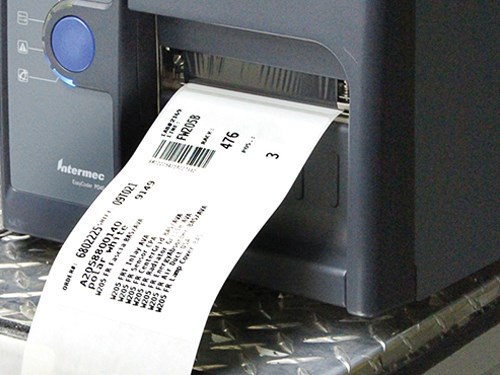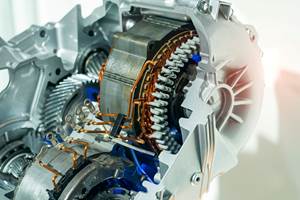RFID Boosts Production Efficiency For Bumper Molder
RFID technology significantly improves ‘error-proofing’ and productivity from molding to final fabrication.
RFID technology is allowing Rehau Automotive LLC in Cullman, Ala., to bolster efficiency in production of painted bumper systems for the 2015 Mercedes C-Class, being launched in North America this month. The same bumpers are currently being produced at Rehau’s German and South African facilities, both of which have also adopted the RFID technology.
“We wanted to standardize our process,” recalls Albert von Pelser-Berensberg, plant manager at the Cullman facility. “We installed the technology at this plant at the end of 2013, and by June it was fully being employed in production of bumpers for this program.” At the plant, bumpers for other Mercedes vehicles, such as the GL-class SUV, are also molded, and von Pelser-Berensberg aims to have the RFID technology running on that program by year’s end. By mid-2015, he expects Rehau to be using RFID technology in every one of its bumper programs.
“We injection mold the bumpers and apply a printed RFID label, which contains the semiconductor chip with all the electronic information, like the serial number,” he explains. “These labels are placed on the non-visible side of the bumper by a fully automatic label printer/applicator. The robot holds the bumper over the label applicator and the applicator ‘blows’ the label onto the part with pressurized air.”
Previously, labels with barcodes were applied by hand and checked only at the end of the process, as it would have been too time-consuming to do otherwise. An operator had to either hold the bumper over the scanner or the other way around. Von Pelser-Berensberg says there is now significantly better “error-proofing” and anticipates that it will result in significant scrap reduction.
A key advantage of RFI label application is that the bumper passes by RFID antennas that read the information at all downstream workstations. Von Pelser-Berensberg stresses the importance of traceability for purposes such as warranties, including information on when the product was made and assembled.
“More importantly, our assembly area benefits considerably,” he adds. “This is where you are faced with hundreds of options for the bumper, and it can be confusing. RFID antennas read the information on the label, each with a serial number based on the exact version of the bumper ordered by the customer.” Taking the Mercedes C-Class bumpers as one example, there are two completely different bumper styles—one for the standard C-Class and one for the AMG version. In addition, there are about 12 colors and various electronics, including parking sensors, radar sensors for blind spots, front-view cameras, LED daytime running lights, and headlamp washer units.
Rehau uses the RFID technology to track the various bumper systems it makes at its eight global facilities in order to both boost the efficiency of its processes—from injection molding to final fabrication—as well as to rapidly identify any problems related to a particular OEM’s orders. Rehau first employed the technology at its plant in Germany and entered into a contract in 2012 with German automatic-identification software firm noFilis AutoD GmbH. noFilis is providing Reheau with hardware and software, as well as integration and support.
Related Content
Automotive Awards Highlight ‘Firsts,’ Emerging Technologies
Annual SPE event recognizes sustainability as a major theme.
Read MoreMolder Repairs Platen Holes with Threaded Inserts
Automotive molder ITW Deltar Fasteners found new life for the battered bolt holes on its machine platens with a solution that’s designed to last.
Read MoreDesign Optimization Software Finds Weight-Saving Solutions Outside the Traditional Realm
Resin supplier Celanese turned to startup Rafinex and its Möbius software to optimize the design for an engine bracket, ultimately reducing weight by 25% while maintaining mechanical performance and function.
Read MorePEEK for Monolayer E-Motor Magnet Wire Insulation
Solvay’s KetaSpire KT-857 PEEK extrusion compound eliminates adhesion and sustainability constraints of conventional PEEK or enamel insulation processes.
Read MoreRead Next
Processor Turns to AI to Help Keep Machines Humming
At captive processor McConkey, a new generation of artificial intelligence models, highlighted by ChatGPT, is helping it wade through the shortage of skilled labor and keep its production lines churning out good parts.
Read MorePeople 4.0 – How to Get Buy-In from Your Staff for Industry 4.0 Systems
Implementing a production monitoring system as the foundation of a ‘smart factory’ is about integrating people with new technology as much as it is about integrating machines and computers. Here are tips from a company that has gone through the process.
Read More


























